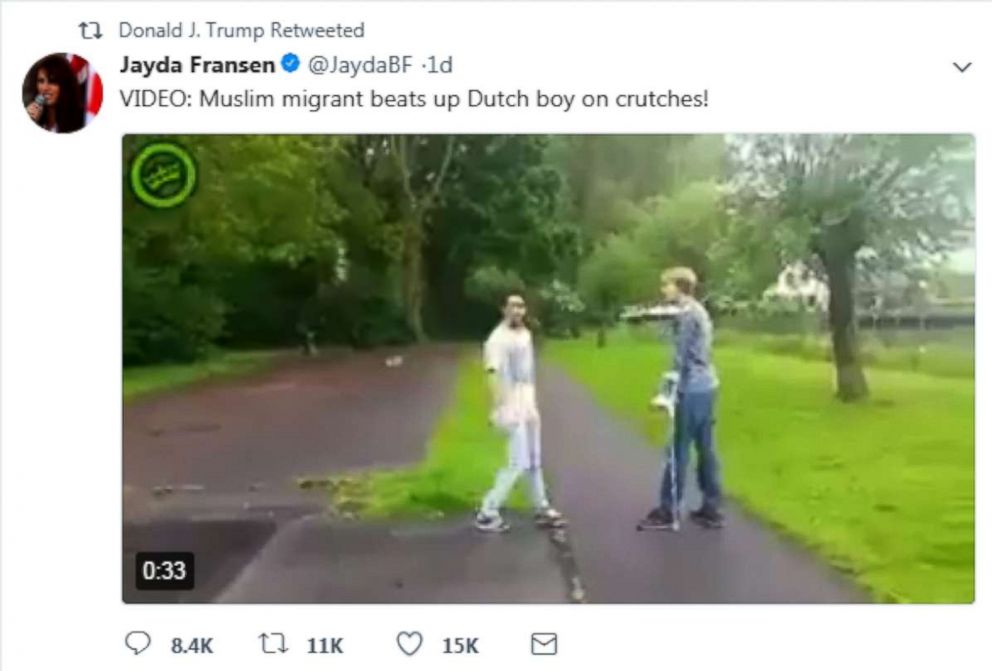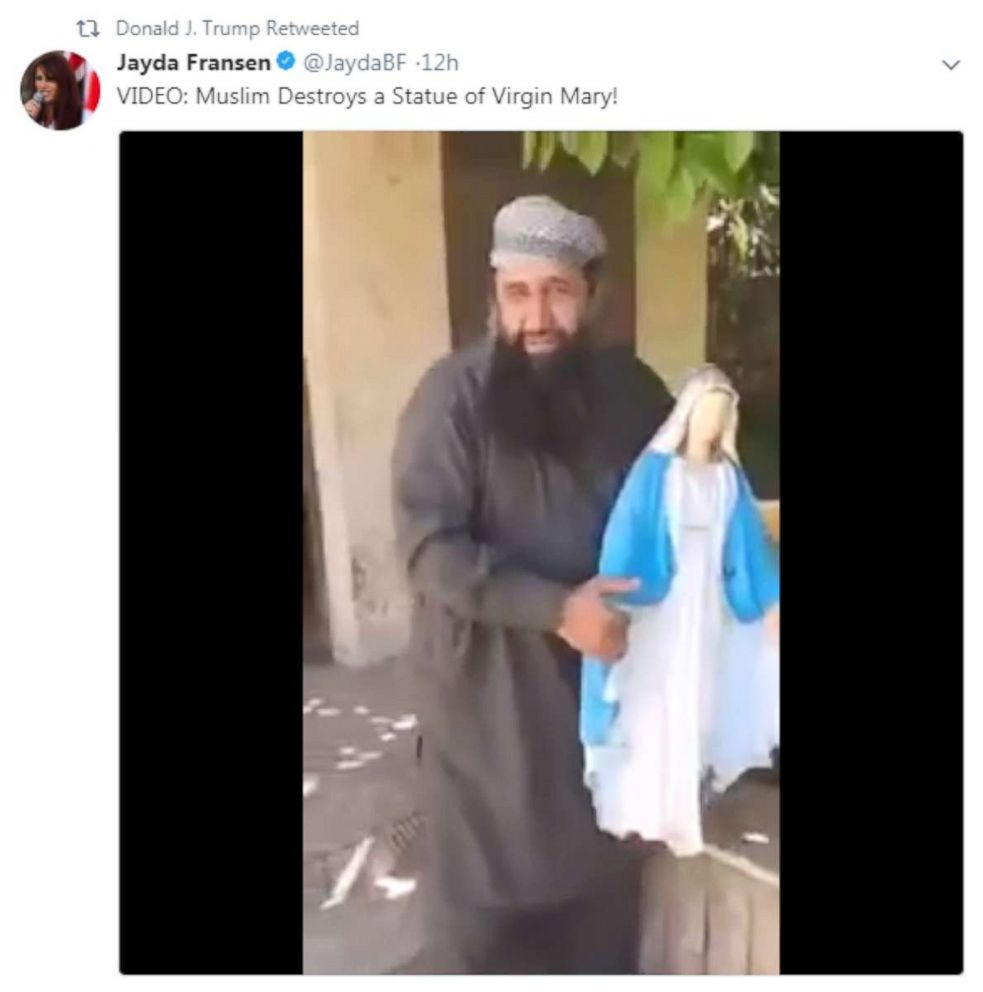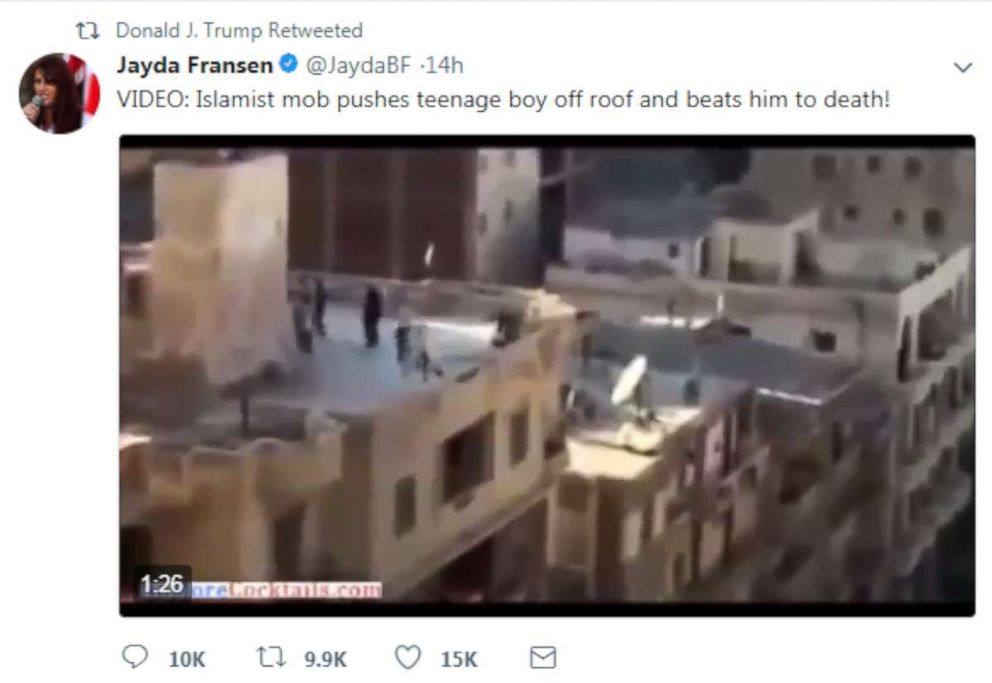Where did the anti-Muslim videos retweeted by Trump come from?
The videos appear to originate from Syria, Egypt and the Netherlands.
— -- President Donald Trump sparked swift backlash after he retweeted three videos containing anti-Islamic content from a leader of a far-right British political group on Wednesday morning. But where did the videos actually come from?
Jayda Fransen, deputy leader of Britain First, a far-right party widely condemned as an extremist group that targets mosques and Muslims, posted the videos Trump retweeted over the past 24 hours. However, on inspection, the videos appear to originate from Syria, Egypt and the Netherlands.

The first video retweeted by the president was entitled by Fransen “Muslim migrant beats up Dutch boy on crutches.” ABC News found the earliest published version of this video on the Dutch website Dumpert on May 12. Dumpert made no mention of the religion or nationality of either man. The video shows a young man dressed in jeans and a light-colored T-shirt knock another man, who is carrying a crutch, to the ground and repeatedly punches and kicks him. Dutch police confirmed to ABC News that they arrested the teenage perpetrator seen in the video and he received a HALT settlement. HALT is a community program in the Netherlands used to treat juveniles charged with smaller offenses in place of criminal proceedings.

The second video -- captioned by Fransen "Muslim Destroys a Statue of Virgin Mary!" -- shows a man smashing a statue of the Virgin Mary. The video dates from October 2013, when it appeared on numerous Syrian news sites. Those reports say the video was shot in the Syrian village of Yakubiya and identify the man as a local Islamist leader. ABC News confirmed the man in the video, who is speaking Arabic with a slight Syrian accent, states that he rejects the worship of idols before he destroys the statue.

The third video that Fransen described as “Islamist mob pushes teenage boy off roof and beats him to death” shows an incident that happened in Alexandria, Egypt, on July 5, 2013. The video was shot in the Sidi Gaber area of Alexandria during violent clashes between supporters and opponents of former Egyptian President Mohamed Morsi. A longer version of the video shows two men being thrown from a ledge and then one of them is hit on the head with a stone. The violence in the area was reported widely at the time but it is unclear whether the men thrown from the building in the clip survived.
White House press secretary Sarah Sanders insisted Wednesday that Trump was not pushing an anti-Muslim propaganda or offering an endorsement of the group, but instead making the case for national security.
"It’s important to talk about national security and national security threats,” Sanders said. “The president sees different things to be a national security threat and he sees having strong borders as being one of the things that helps protect people in this country from some real threats we face.
“Whether it’s a real video, the threat is real and that is what the president is talking about, that’s what the president is focused on, is dealing with those real threats and those are real no matter how you’re looking at it,” she added.
The British government responded to Trump's actions in a statement, saying "it is wrong for the president to have done this." And the Netherlands’ embassy to the United States tweeted at Trump this afternoon, saying: “Facts do matter. The perpetrator of the violent act in this video was born and raised in the Netherlands. He received and completed his sentence under Dutch law.”
Fransen responded to Trump's retweets on Twitter, writing in all caps: "Donald Trump himself has retweeted these videos and has around 44 million followers! God bless you Trump! God bless America!"




